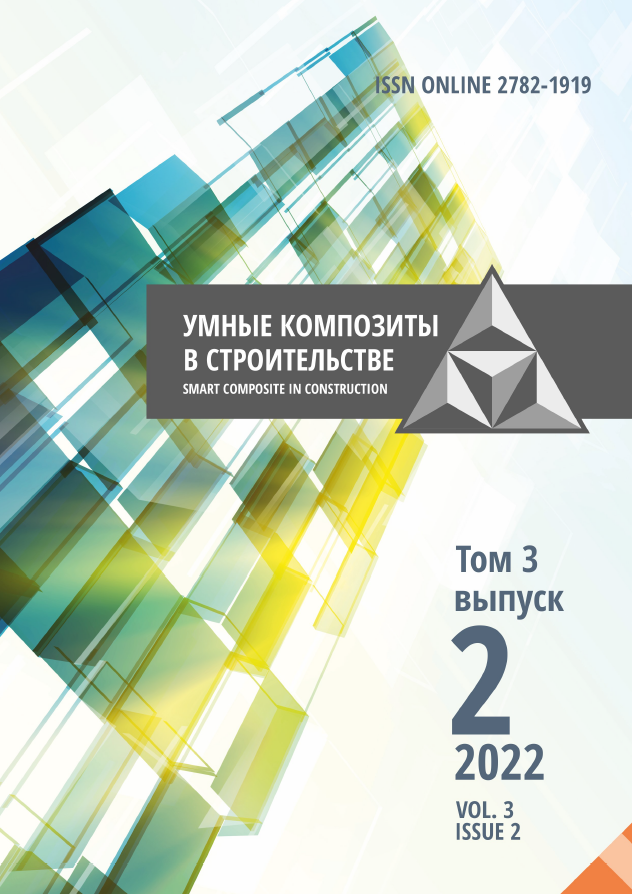Moscow, Moscow, Russian Federation
Moscow, Moscow, Russian Federation
Moscow, Moscow, Russian Federation
The article discusses the use of PVC-based polymer waterproofing membranes in maintainable waterproofing systems of foundations. The main properties of polymer waterproofing membranes, which characterize the possibility of their use in such systems, are considered. Examples of objects and conditions of construction sites where the use of maintainable systems is recommended are given (these systems are used in the most difficult construction conditions, and their main feature is the ability to perform repairs during the operation of the constructed object). The process of installation of a two-layer waterproofing system, as well as the equipment and components used, is considered. 2 experiments were conducted to determine the consumption of injection formulations for the repair of sealed cards in a construction laboratory and their loading. Repair compositions based on acrylates ended up in pre-prepared sealed cards with a size of 2x2 m in the conditions of loading. In the future, the parameters of the consumption of injection formulations were measured. Card no. 1 consisted of two layers of PVC membrane, one of which had a textured surface. Card no. 2 consisted of two layers of PVC membrane with a signal layer, between which a separating layer of needle-punched geotextile was laid. According to the results of the experiment, it was revealed that the most optimal is the use of 2-layer waterproofing systems of foundations, with membranes with flat and textured surfaces. This is due to the use (as the top layer) of a membrane with a textured surface, so that the distribution of the repair injection composition under load conditions on the card is the most uniform. The conducted studies also have shown the advantages of two-layer waterproofing systems in comparison with single-layer ones.
concrete, reinforced concrete, corrosion, carbonation, PVC, polymer membranes, waterproofi ng, maintainability
1. Klovsky, A.V. & Mareeva, O.V. (2018) Features of objects designing of the increased level of responsibility under boundary values of seismicity of the construction site, Prirodoobustrojstvo, (3), pp. 63-69. DOI:https://doi.org/10.34677/1997-6011 (in Russian).
2. Kirillov, A.N. & Pastukhok, S.M. (2011) Engineering and geological conditions for the construction of foundations in the floodplain of the Veselka and Seversky Donets rivers in Belgorod, Uspexi sovremennogo estestvoznaniya, (11), pp. 97-98 (in Russian).
3. Goglev, I.N. (2021) A new promising method for detecting carbonization of reinforced concrete building structures during inspections, Smart Composite in Construction, 2(4), pp. 35-45. DOI:https://doi.org/10.52957/27821919_2021_4_35 [online]. Available at: https://drive.google.com/file/d/1PPYDXwPdCXwJOMe5vA1h8iPcFBebZPwz/view
4. Rumyantseva, V.E., Goglev, I.N. & Loginova, S.A. (2019) Application of field and laboratory methods for the determination of carbonation, chloride and sulfate corrosion in the examination of building structures of buildings and structures, Stroitel`stvo i tekhnogennaya bezopasnost`, (15), pp. 51-58 (in Russian).
5. Rumyantseva, V.E. & Goglev, I.N. (2016) Features of the corrosion process of concrete and reinforced concrete, complicated by the effects of chlorides and carbon dioxide, Dolgovechnost` stroitel`nykh materialov, izdelij i konstrukcij. Materialy` Vserossijskoj nauchno-texnicheskoj konferencii, posvyashchennoj pamyati zasluzhennogo deyatelya nauki Rossijskoj Federacii, akademika RAASN, doktora texnicheskix nauk, professora Solomatova Vasiliya Il`icha. Saransk: Izd-vo Nacional'nyj issled. Mordov. gos. un-ta im. N.P. Ogaryova, pp. 106-111 (in Russian).
6. Rosenthal, N.K. (2009) Corrosion and repair of reinforced concrete structures, StrojPROFIl`, 2(72), pp. 22-28 (in Russian).
7. Alekseev, S.N. (1976) Corrosion resistance of reinforced concrete structures in an aggressive industrial environment. M.: Stroyizdat (in Russian).
8. Vasilyev, A.A. (2017) Estimation of applicability of concretes in reinforce-concrete elements and constructions for different operating terms, Vestnik Belorusskogo gosudarstvennogo universiteta transporta: nauka i transport, 2(35), pp. 133-135 (in Russian).
9. Ioskevich, V.V. (2017) Comparison of methods for calculating steel-concrete slabs using SET OF RULES 266.1325800.2016 and SET OF RULES 63.13330.2012. In: G.Yu. Gulyaev (Ed.), Science and Education, pp. 197-204 (in Russian).
10. Krylov, S.B., Sharipov, R.S., Zenin, S.A. & Volkov, Yu.S. (2019) Directions of convergence of the requirements of the main domestic standard for the design of concrete and reinforced concrete structures SP 63.13330.2012 with the requirements of the International Standard ISO 19338, Academia. Arkhitektura i stroitel`stvo, (1), pp. 93-98. DOI:https://doi.org/10.22337/2077-9038-2019-1-93- 98 (in Russian).
11. Luzhnov, E.A. (2021) Comparative analysis of polymer roofing materials, Perspektivy` razvitiya nauki i obrazovaniya: materialy` Mezhdunarodnoj (zaochnoj) nauchno-prakticheskoj konferencii. Neftekamsk, pp. 115-125 (in Russian).
12. Stepanova, V.F., Sokolova, S.E. & Polushkin, A.L. (2017) Effective means of secondary protection to improve the durability of buildings and structures, Vestnik NIC Stroitel stvo, ʹ 1(12), pp. 126-133. DOI: 10.37538 (in Russian).
13. Stepanova, V.F., Sokolova, S.E. & Polushkin, A.L. (2018) Protective paint and varnish coatings for concrete and reinforced concrete structures, Lakokrasochny`e materialy` i ikh primenenie, (6), pp. 30-34 (in Russian).
14. Chubinishvili, A.T. (2015) Application of special polymeric waterproofing membrane for underground works, Metro i tonneli, (6), pp. 31-33 (in Russian).
15. Sedova, A.A. (2020) Features of application of waterproofing systems of foundations, including membranes, Seriya "Stroitel`stvo": sbornik statej magistrantov i aspirantovs. SPb.: SPbGASU, 2(3), pp. 385-398 (in Russian).
16. News of the construction complex (2018), Krovel`ny`e i izolyacionny`e materialy,` (6), pp. 5-8 (in Russian).
17. Tsybenko, A.V. (2021) Investigation of the waterproofness of sealed sections of waterproofing made of polymer membranes and hydraulic pads, Fundamenty, 1(3), pp. 72-75 (in Russian).
18. Chubinishvili, A.T., Tsybenko, A.V. & Ilyin, D.A. (2018) The studies of resistance of waterproofing membranes to the impact of hydrostatic pressure on rough surface, ALITinform: Cement. Beton. Sukhi’e smesi, 1(50), pp. 68-74 (in Russian).







